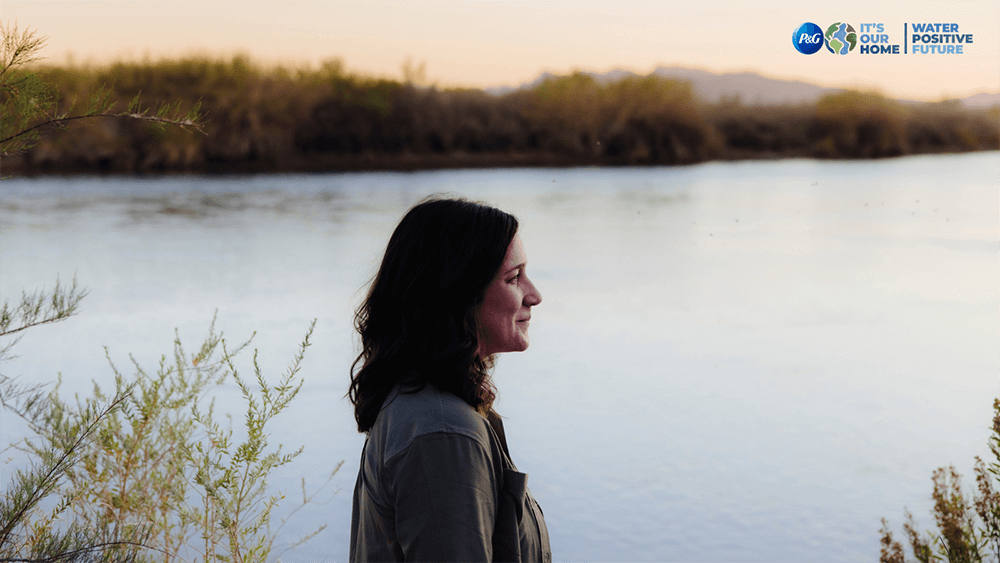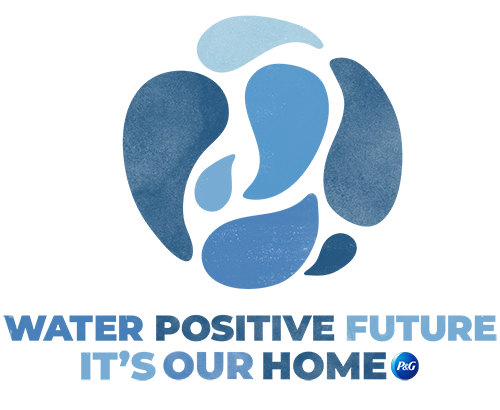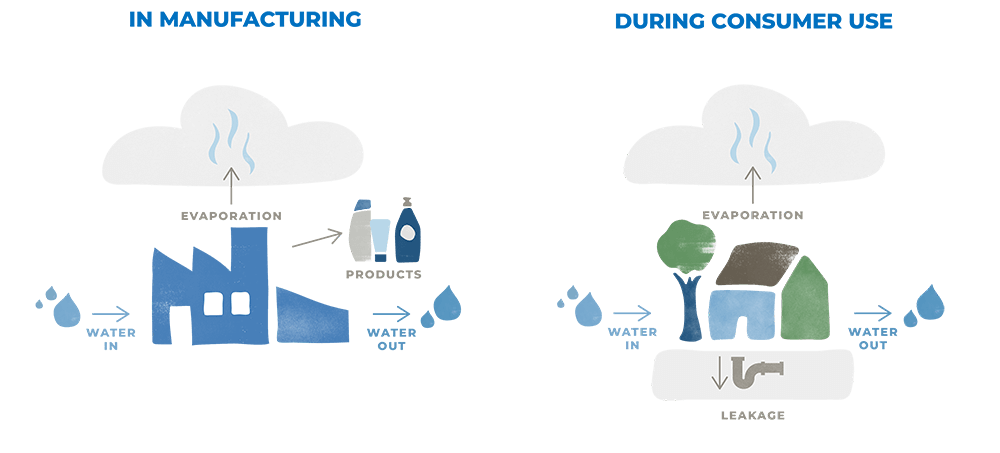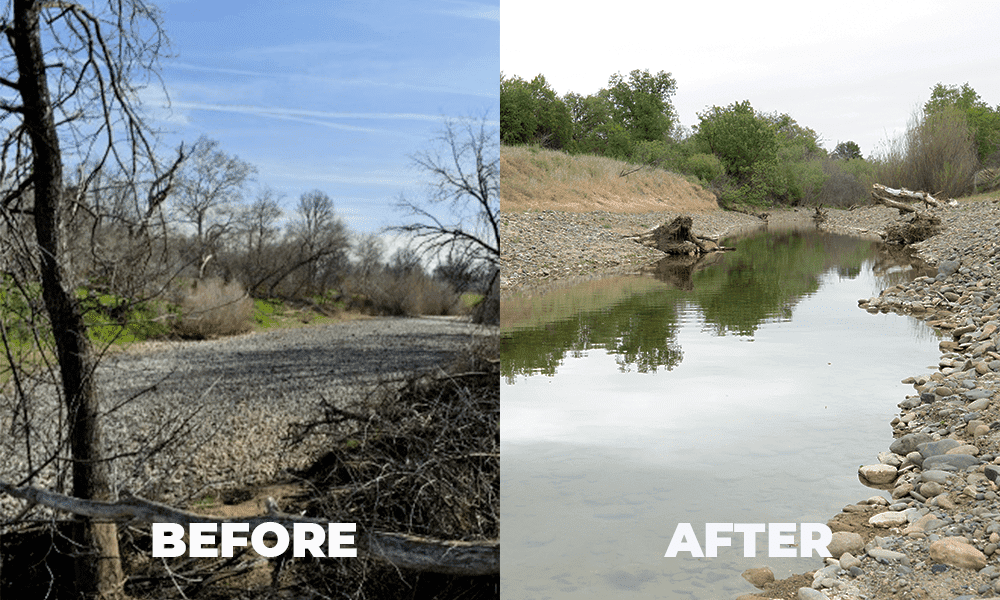8/31/2022
World Water Week: Metrics That Matter for Water

There is no question that water scarcity is a growing threat across the globe. In fact, the United Nations projects that nearly one-third of people already live in water-stressed regions. It’s essential that we accelerate progress toward a water positive future that can sustain people and nature, now and for generations to come. You can’t improve what you don’t measure, and measuring water can be challenging.
Last week at the World Water Week conference in Stockholm, Sweden, leaders gathered to discuss some of the world’s greatest water-related challenges and to share potential solutions. P&G’s Global Water Stewardship Leader, Shannon Quinn, was there and shared greater insight into the Company’s Water Positive Future Strategy that we announced in June.
Shannon dived into a range of topics - from the ground-breaking methods behind P&G’s new 2030 water restoration targets to how fixing leaky toilets can save millions of liters of water.

Developing Corporate-Wide Water Targets
To kick off our participation at World Water Week, Shannon and the World Resources Institute (WRI) shared insights on the novel methods behind our new 2030 water targets - restoring more water than is consumed1 at P&G manufacturing sites located in 18 priority water-stressed areas around the world and restoring more water than is consumed2 when using P&G products in the high water-stressed metropolitan areas of Los Angeles and Mexico City - this has been recognized as a first-of-its-kind goal.

These insights shared why setting corporate-wide water targets are important, defined what we mean by “water consumption” in facilities and homes and described how we estimated the total water consumption that occurs when people use P&G products in Los Angeles and Mexico City.
Shannon also shared examples of how we’re already making progress against these new targets, including the Brayton Restoration project and the East Sand Slough Side Channel Reconnection project in a water- stressed area in Northern California.

BRAYTON RESTORATION PROJECT, California, U.S.
Restoring 25 acres of land back to native habitat and improving water quality along the Sacramento River.

EAST SAND SLOUGH SIDE CHANNEL RECONNECTION PROJECT, California, U.S.
Creating a sustainable habitat for critically endangered juvenile Chinook salmon and other species by allowing water to flow for more days out of the year.
There’s an upcoming publication of a white paper created in collaboration with WRI, set to be released in October, outlining this method, which will enable others as they consider developing their own corporate-wide water targets.
Corporate Insights on Science-Based Targets for Water
Challenges facing our world’s water systems are increasingly making headlines around the world. But not every place facing water challenges is facing the same ones or at the same magnitude. The local nature of water makes it challenging to efficiently and accurately determine science-based targets, but efforts led by the Science Based Targets Network are moving forward to define methodologies that can help tailor corporate water targets to the location and size of these challenges.
In 2021, P&G was one of three companies selected to participate in piloting the draft Science-based Target for Water methodology. That’s why Quinn joined representatives from General Mills and Suntory in a session hosted by the Science Based Targets Network (SBTN) to discuss their recent experiences piloting new methods for developing Science-Based Targets for Water (prior to their release in early 2023). P&G described its motivation for target-setting and participating in the pilot, along with lessons learned throughout the process and how the pilot helped guide the development of recent water restoration targets.
The Power of Unlikely Alliances: Public-Private Partnerships for Water Efficiency

Leaky toilets brought corporations, NGOs, and water utilities together in a project to install remote leak detection technology in low-income apartment buildings in Los Angeles, saving over 24 million liters of water per year. Leaky toilets are the biggest source of wasted water in multi-family buildings and are often hard to detect. P&G, along with others in California Water Action Collaborative, supported efforts to install remote sensor technology designed by Sensor Industries to detect toilet leaks in three low-income apartment buildings, reducing water bills by 20%. This small, innovative remote sensor technology provides a simple, cost-effective and water efficient solution to a previously invisible problem that is scalable to other water-stressed cities.
This award-winning pilot, recognized by the Los Angeles Better Buildings Challenge in June 2022, is saving water, energy and money in low-income apartments in Los Angeles, proving small actions can yield meaningful results.
And to close our participation at World Water Week, Shannon joined Pacific Institute and Bonneville Environmental Foundation to showcase the collective efforts that occurred to help launch the California Water Action Collaborative’s leak detection project and to also share initial results from the first phase of efforts that started in 2021.
Expansion of this program in the metropolitan area is now underway with continued P&G support and additional funding from Cascade to scale the project to more buildings in L.A., likely leading to millions of liters of additional annual water savings, reduction in energy use, and cost.
We know we can have a greater impact when we work together and will continue to look for transformative partnerships to progress our vision for a water positive future.
For more information about our efforts to restore water for people and nature, please visit P&G’s Water Positive Future Strategy and our blog post, “A Closer Look at P&G’s New Strategy to Help Address Global Water Crisis”. Visit our ESG website to learn more about our comprehensive Environmental Sustainability efforts and our 2021 Citizenship Report.
1Water that evaporates during the manufacturing of our products or is incorporated into the finished product manufactured at these sites.
2Water from household leaks and evaporation during the use of our products.